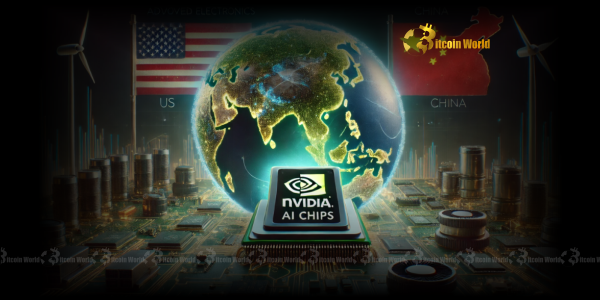Google Veo 3: Unleashing Revolutionary Image-to-Video AI Generation
0
0

In the rapidly evolving digital landscape, where innovation often dictates the pace of progress, Google has once again made a significant leap forward. For those in the cryptocurrency space, understanding the cutting-edge developments in artificial intelligence is crucial, as AI increasingly intersects with blockchain, NFTs, and the metaverse. Google’s latest announcement—the integration of a powerful image-to-video generation capability into its Google Veo 3 AI video generator via the Gemini app—marks a pivotal moment in creative technology.
What is Google Veo 3 and its New Capabilities?
Google Veo 3 is Google’s advanced artificial intelligence model designed to create high-quality videos from text prompts. Initially launched in May, it quickly gained global traction, becoming available in over 150 countries. The most exciting recent enhancement is its new image-to-video generation feature. This capability allows users to transform a static image into a dynamic video clip, opening up a world of creative possibilities. This isn’t Google’s first foray into this area; they previously rolled out a similar feature in their AI-powered video tool, Flow, also introduced at Google I/O. The integration into Veo 3, accessible through the Gemini app, signifies a broader push to make sophisticated AI video creation more accessible.
The Power of AI Video Generation: Transforming Still Images
The ability to transform a still image into a moving video clip is a game-changer for content creators, marketers, and even everyday users. This leap in AI video generation technology means that a single photograph can become the foundation for a short narrative, an animated sequence, or a dynamic visual asset. Imagine effortlessly turning a product shot into a mini-advertisement, or a personal photo into a memorable animated memory. Google has made the process straightforward:
- Users select the “Videos” option within the prompt box in the Gemini app.
- They upload a desired photo.
- Optionally, they can describe the audio in the prompt to add sound.
- The Veo 3 model then processes the input, generating a video clip.
Once generated, the video can be downloaded or shared, streamlining the content creation workflow significantly. This feature leverages advanced algorithms to predict motion, add subtle animations, and maintain visual coherence, bringing images to life with unprecedented ease.
How the Gemini App AI Enhances Your Creative Workflow
The Gemini app AI serves as the primary gateway for users to access the new image-to-video capabilities of Veo 3. Gemini, Google’s conversational AI, acts as an intuitive interface, allowing users to interact with the powerful Veo 3 model through natural language prompts. This integration simplifies the complex process of video creation, making it accessible even for those without extensive technical skills or professional video editing software. The synergy between Gemini’s understanding of user intent and Veo 3’s generative power creates a seamless and efficient creative experience. It’s a testament to Google’s commitment to democratizing advanced AI tools, putting powerful video generation into the hands of millions. Since its release just seven weeks ago, Google proudly notes that users have already created over 40 million videos across both the Gemini app and the Flow tool, highlighting the immense demand and adoption of these innovative features.
Democratizing Creativity: The Impact of AI Video Generators
The rise of advanced AI video generators like Google Veo 3 is profoundly impacting the creative landscape. Traditionally, video production required specialized skills, expensive equipment, and significant time investment. Now, with tools that can generate high-quality video from simple inputs, the barrier to entry for video creation has been dramatically lowered. This democratization of creativity empowers individuals and small businesses to produce professional-looking content without needing large budgets or dedicated teams. For the cryptocurrency and NFT communities, this means new avenues for creating engaging visual content for digital art, marketing decentralized applications, or even crafting dynamic backdrops for metaverse experiences. The ease of generation fosters experimentation and rapid prototyping, accelerating the pace of digital content innovation across various sectors.
However, with great power comes great responsibility. Google is acutely aware of the ethical implications of AI-generated content. To ensure transparency and combat misinformation, all videos created using the Veo 3 model include a visible watermark displaying “Veo” and an invisible SynthID digital watermark. SynthID is a robust tool adopted by Google’s AI models to identify AI-powered digital artifacts, providing a crucial layer of authenticity. Google also released a separate tool earlier this year to help detect content containing SynthID, reinforcing their commitment to responsible AI deployment.
Looking Ahead: The Future of Generative AI and Digital Assets
The advancements in image to video AI, exemplified by Google Veo 3, are not just about making cool videos; they represent a significant step towards a future where AI-powered tools are integral to digital creation. For the blockchain and cryptocurrency world, this has fascinating implications. Imagine artists creating dynamic NFT collections from single images, or developers generating rich, animated assets for decentralized games and metaverse environments with unprecedented speed. The ability to rapidly prototype and iterate on visual content could accelerate innovation in Web3, making it easier for projects to tell their stories and engage their communities visually.
As these technologies mature, we can expect even more sophisticated control, higher fidelity outputs, and seamless integration with other creative platforms. The intersection of generative AI and digital assets will likely foster new economic models and creative opportunities, blurring the lines between creator and consumer. The current limitations, such as the three-creations-per-day limit for Google AI Ultra and Pro plan users, are likely just initial safeguards as the technology scales. The rapid adoption seen so far suggests a bright future for AI-powered content creation.
Google’s integration of image-to-video generation into its Veo 3 AI model, accessible through the Gemini app, is a transformative development in the field of artificial intelligence. By simplifying the process of creating dynamic visual content from static images, Google is empowering a new wave of creators and innovators. This technology not only enhances accessibility to advanced video production but also sets new standards for transparency with its robust watermarking system. As AI continues to evolve, its impact on digital creation, including the burgeoning world of cryptocurrencies and digital assets, will undoubtedly be profound, opening up exciting new possibilities for how we interact with and create visual content.
To learn more about the latest AI market trends, explore our article on key developments shaping AI models features.
0
0
 Manage all your crypto, NFT and DeFi from one place
Manage all your crypto, NFT and DeFi from one placeSecurely connect the portfolio you’re using to start.




